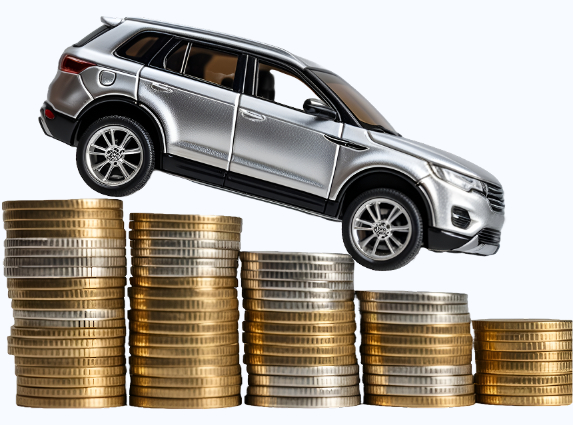As your vehicle's age and mileage increases, its value decreases. Although depreciation is unavoidable, you can project your car's value over time by calculating vehicle depreciation with the help of the VinCheckUp Car Depreciation Calculator.
Gain insights into how the value of your vehicle may change over time as you continue to use it.

As cars become more advanced packed full of high-tech features, they will require more service, software updates and repairs increasing service costs. These increasing high ownership costs contribute to the accelerated depreciation. This accelerated depreciation especially effects luxury and premium vehicles as they tend to have more of these new and advanced and autonomous features and complex electrical systems requiring more frequent maintenance and repairs. Due to the overall higher ownership costs these vehicles tend to depreciate at a higher rate and may not be as desirable on the used car market. Generally premium vehicles are less appealing to budget-conscious used car buyers. However, not all cars are created equal, using the latest sales data and analytics we have identified some of the highest depreciating vehicles on the market today.

The BMW 7 Series exhibits the highest depreciation rate within the initial five years of ownership. While newer 7 Series models boast cutting edge technology and luxurious cabin finishes, their steep initial costs and escalating service expenses as they age contribute to a rapid decline in resale value on the used car market.

The Maserati Quattroporte is an exhilarating Italian sports car, it is also amongst the highest depreciating vehicles in the US today. The reason has to do with its initial high costs coupled with expensive maintenance and repair costs. Contributing to the problem is its lower-than-average reliability score and complex repair procedures, making this car one of the highest depreciating vehicles within the first 5 years of ownership.

As a brand Jaguar has made some amazing, exquisite vehicles however, it has been on a decline for a long time. The Jaguar F-Pace is amongst the highest depreciating luxury SUVs on the market. Its high initial cost and a reputation for reliability issues has led to rapid depreciation. In addition to the higher-than-average ownership costs the lack of a service and repair infrastructure in the US has also negatively contributed the used Jaguar car prices and overall desirability.
Car depreciation is an important concept in the world of automotive finance and accounting. Depreciation is a method of accounting that measures the decrease in value of an asset over time, and it's essential for accurately reflecting the tax liability and financial state of a company. In order to understand how to calculate car depreciation it is important to get acquainted with the most commonly used car depreciation formulas. The most used version is the Straight-Line method and declining balance method. Both versions of calculations are used for car depreciation for tax purposes.
Straight-Line Method: This is the simplest and most commonly used method. It assumes an even rate of depreciation over the useful life of the asset. The formula for straight-line depreciation is:
This method assumes the car loses value at a constant rate each year. This may not be the most realistic formulation as most newer vehicles tend to lose their value at a higher rate than vehicles 5 years or older.
Declining Balance Method: This method applies a higher depreciation rate in the early years of the car. This tends to be a more realistic assessment of the vehicles depreciation rate especially for those of us that do not plan to own the car past the 3 year period.
Cost of Car: $30,000
Depreciation Rate: 40% (Double Declining Balance, which is twice the straight-line rate of 20%)
Book Value at the Beginning of the Year: $30,000
Estimated total miles over its life: 100,000 miles
Miles driven in Year 1: 20,000 miles
Each method has its own advantages and is suited to different scenarios. The straight-line method is straightforward and evenly distributes the cost over the asset's life, making it ideal for financial reporting. The declining balance method accelerates depreciation, which can be beneficial for tax purposes. The method you pick will highly depend on the specific needs and circumstances of the car owner or business.